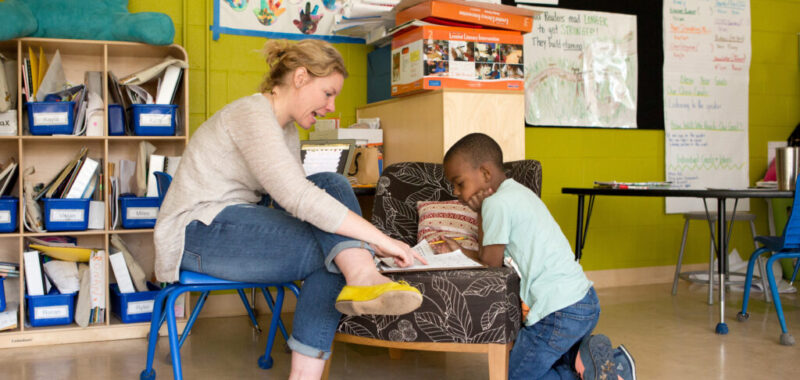
Credit: Allison Shelley for American Education
What are education leaders doing about transforming the way schools address learning, behavior and emotional problems? The current answer, it seems, is: not much.
We do see increasing discussions among education leaders about transforming education in general. Naturally, much of the focus is on improving instruction and making major changes in how schools are managed (e.g., financed, administered, held accountable). However, when it comes to improving how schools play their role in providing support when students are not doing well, proposals for transformative changes generally are not forthcoming.
The result: As the number of learning, behavior and emotional problems increases, schools continue to react in inadequate ways.
What’s wrong with what schools are doing now?
All schools devote resources to coping with student problems. Some are able to offer a range of student and learning supports; others can provide only what is mandated. In the majority of schools, what is available usually covers relatively few students. More resources would help. But school budgets always are tight, and adding the number of student support staff that advocates call for is really not in the cards.
In general, districts plan and implement student and learning supports in a fragmented and piecemeal manner, generating a variety of specialized programs and services. Over many years, increasing concern about fragmented approaches has produced calls for “integrated services” and, recently, for “integrated support systems.”
However, by focusing primarily on fragmentation, policymakers and school improvement advocates fail to deal with a core underlying problem. What drives the fragmentation is the longstanding marginalization in school improvement policy of the role schools must play in addressing barriers to learning and teaching.
A fundamental challenge for education leaders and policymakers is ending this marginalization. Meeting the challenge requires escaping old ways of thinking about how schools address learning, behavior and emotional problems.
What might a transformed approach look like?
Addressing the pervasive and complex barriers that impede effective teaching and student learning requires a systemwide approach that comprehensively and equitably supports whole-child development and learning. This involves districts and schools rethinking how they frame the practices they use to address learning, behavior and emotional problems.
In this respect, the current widespread adoption of some form of a multitiered “continuum of interventions” (commonly known as MTSS) is a partial step in the right direction. This framework recognizes that a full range of intervention must include a focus on promoting whole-student healthy development, preventing problems, providing immediate assistance when problems appear, and ensuring assistance for serious and chronic special education concerns. But moving forward, our research has clarified the need to reframe each level of intervention into subsystems designed to weave together school and community resources.
Moreover, our research indicates that the various programs, services, initiatives and strategies can be grouped into six domains of classroom and schoolwide student and learning support. The six arenas encompass interventions that:
- Embed student and learning supports into regular classroom strategies to enable learning and teaching
- Support transitions (e.g., new grade, new school, before/after school, during lunch and other daily transitions)
- Increase home and school connections and engagement
- Respond to — and, where feasible, prevent — school and personal crises
- Increase community involvement and collaborative engagement
- Facilitate student and family access to special assistance.
Organizing the activity in this way helps clarify what supports are needed in and out of the classroom and across each level of the continuum to enable effective teaching and motivate student learning.
We recognize that the changes education leaders are already pursuing represent considerable challenges and that the changes we discuss can be daunting.
But maintaining the status quo is untenable, and just doing more tinkering will not meet the need.
Transforming how schools play their role in addressing barriers to learning and teaching into a unified, comprehensive and equitable system that is fully integrated into school improvement policy and practice is essential to enhancing equity of opportunity for students to succeed at school and beyond.
•••
Howard Adelman and Linda Taylor are co-directors of the Center for MH in Schools & Student/Learning Supports at UCLA, an initiative to improve outcomes for students by helping districts and their schools enhance how they address barriers to learning and teaching.
The opinions expressed in this commentary represent those of the authors. EdSource welcomes commentaries representing diverse points of view. If you would like to submit a commentary, please review our guidelines and contact us.

